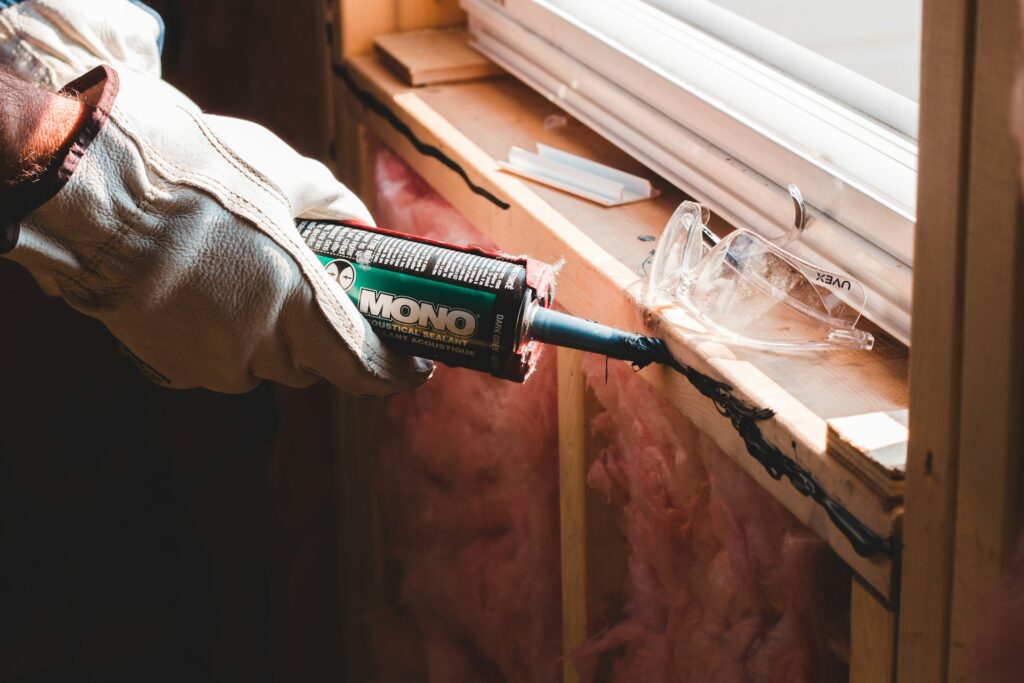Insulation is a crucial part of how our homes use energy. It helps keep warm air inside during winter and cool air inside during summer. But over time, insulation can wear out and lose its effectiveness. This affects our comfort and can lead to higher energy bills.
Old insulation may not provide the same level of protection it once did. Drafts, uneven temperatures, and increased heating or cooling costs can indicate that your insulation is no longer doing its job. As homes age, insulation can settle or become damaged, letting precious energy escape.
Addressing the issues caused by old insulation can lead to significant savings. It’s not just about reducing energy bills; it’s about creating a more comfortable home environment. By understanding how insulation works and recognizing signs of underperformance, we can make informed decisions to improve our home’s energy efficiency.
Understanding Insulation and Its Role in Energy Efficiency
Insulation plays a big role in keeping our homes energy-efficient. It acts like a barrier that slows down the flow of heat into and out of our homes. This helps maintain a consistent and comfortable temperature inside, no matter what the weather is like outside. When a home is well-insulated, it requires less energy to heat in the winter and cool in the summer.
Insulation is installed in various parts of a house, including the attic, walls, floors, and ceilings. By reducing the amount of heat that escapes in the winter or enters in the summer, insulation helps lower the demand on heating and cooling systems. This, in turn, can lead to lower utility bills because the HVAC system doesn’t have to work as hard.
Different materials are used for insulation, such as fiberglass, foam, and cellulose. Each type has its own benefits and is suited for different areas of the home. The effectiveness of these materials is measured by their R-value, which indicates how well they resist heat flow. Higher R-values mean better insulation performance.
The location and type of insulation needed depend on the climate and the specific needs of the home. For example, areas with colder winters may benefit from higher R-values in the attic. This helps prevent heat loss more efficiently. Understanding these factors ensures that the insulation we choose effectively enhances energy efficiency.
Signs Your Insulation May Be Underperforming
It’s important to know when our insulation is not doing its job properly. There are several signs that can alert us to problems. Recognizing these signs early can help us take action before energy bills start to rise significantly.
1. Drafty Rooms: If certain areas of the house feel drafty or you notice cold spots, it could mean that the insulation is not providing an effective barrier against the cold.
2. Uneven Temperatures: When some rooms are warmer or cooler than others, it might be a sign that the insulation is not distributed evenly or has deteriorated.
3. Rising Energy Bills: An unexpected increase in heating or cooling costs without a known cause can indicate that insulation has become less effective over time.
4. Cold Walls, Floors, and Ceilings: Touching walls, floors, or ceilings that feel cold to the touch might suggest that the insulating layer is compromised or missing.
5. Pests and Moisture Issues: Moisture build-up or the presence of pests in the attic can harm insulation and reduce its effectiveness. It is important to address these issues promptly.
If you notice any of these signs, it’s a clue that your insulation might be underperforming. Addressing these concerns can lead to improved energy efficiency, lower utility bills, and a more comfortable home environment. Regularly checking for these signs helps in maintaining a well-insulated and energy-efficient home.
Impact of Old Insulation on Energy Bills
Old or damaged insulation can significantly impact energy bills, often causing them to rise unexpectedly. As insulation ages, it might compress, deteriorate, or develop gaps. This loss of efficiency forces heating and cooling systems to work harder to maintain comfortable temperatures, which leads to increased energy consumption.
When insulation fails to provide a proper barrier, warm air escapes during winter and cool air leaks out during summer. This means more energy is needed to keep your home at a desired temperature. The HVAC system will cycle on more frequently, consuming more electricity and resulting in higher utility bills.
Older homes may particularly suffer from outdated insulation materials. These materials lack the advances seen in modern, more efficient insulation products. As a result, they do not perform well in reducing energy transfer between the inside and outside of the home. Poor insulation can also contribute to problems like ice dams in colder climates, which cause additional heating costs and the potential for water damage.
Regularly evaluating the state of your insulation can provide insights into its condition and effectiveness. If you see an increase in your energy bills with no other explanation, it’s wise to consider checking the insulation’s performance. Energy audits or home inspections can help determine where improvements can be made, ultimately saving money in the long run.
Solutions to Improve Insulation and Reduce Costs
Improving insulation in your home is a practical step toward reducing energy costs and enhancing comfort. There are several approaches and materials to consider that can make a big difference.
1. Upgrade to Modern Insulation: Newer insulation materials such as spray foam, blown-in cellulose, or high-R-value fiberglass batts offer better performance than older materials. These modern options are designed to provide superior heat resistance and air sealing.
2. Seal Air Leaks: Identify and seal cracks and gaps around windows, doors, and electrical outlets. Air sealing pairs well with good insulation to maintain effective temperature control.
3. Add Insulation Layers: If the insulation in your attic or walls seems thin or insufficient, adding extra layers can enhance effectiveness. This is especially beneficial in the attic, where most heat loss occurs.
4. Consider Reflective Insulation: In hot climates, installing reflective insulation can help reduce cooling costs by keeping heat out. This type of insulation reflects radiant heat away from the house.
5. Insulation Check and Replacement: Perform regular checks and consider replacing insulation after 15-20 years or if it shows signs of wear or damage. Professional assessments can help determine the right time for replacement.
Implementing these solutions not only makes a home more energy-efficient but also leads to lasting savings. Taking the time to address insulation inefficiencies contributes to lower energy bills and increased home comfort.
Conclusion
Keeping our homes well-insulated is vital for managing energy use effectively and maintaining comfortable indoor temperatures. Old and underperforming insulation can lead to unnecessary energy expenses by overworking heating and cooling systems. Recognizing the signs of aged insulation early allows us to take proactive steps to improve or replace it, ensuring ongoing efficiency.
Upgrading your insulation or adding modern materials can significantly impact energy savings. It’s not just about reducing costs; it’s about improving the quality and comfort of our living spaces. Understanding how insulation functions and acknowledging when it may be failing positions us to make informed choices for better energy management.
If you suspect your home insulation is affecting your energy bills, reach out to All Thermo. Our team of experts can assess and provide solutions tailored to your needs, ensuring your home stays comfortable and energy-efficient. Let us help you invest in better insulation and see real savings on your utility bills. Contact us today for attic insulation services.

